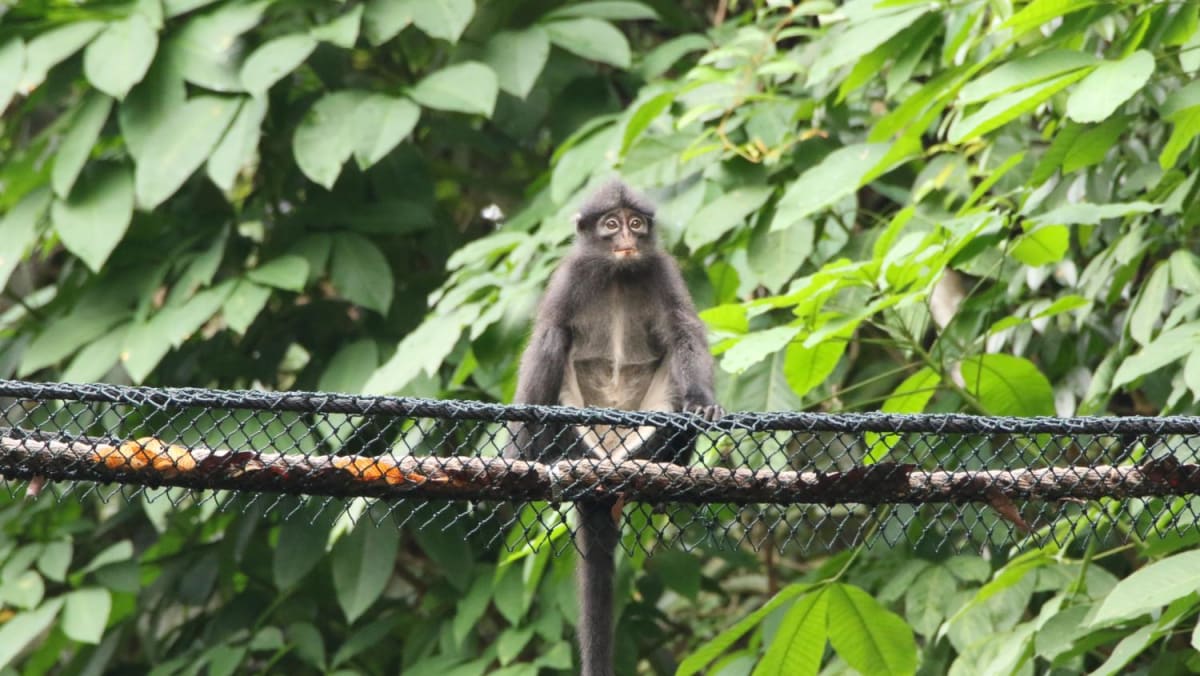
SINGAPORE — Once thought to be on the verge of extinction in Singapore, the number of the critically endangered Raffles’ banded langur, a type of monkey, is now set to double to 150 in the next 15 years, new research has found.
By about 2070, that population could grow to about 244.
The recent study was done by researchers from Singapore and United Kingdom’s Oxford Brookes University. The research paper was published in the Raffles Bulletin of Zoology in September.
The primate, named after Sir Stamford Raffles — credited as the man who first set foot on the island in 1819 and established it as a trading post — has distinctive black fur and white bands on its chest and inner legs.
Apart from Singapore, a number of isolated populations of the Raffles’ banded langur can also be found in southern Peninsular Malaysia.
The Oxford Brookes University and Mandai Nature said in a joint media release on Tuesday (Oct 10) that efforts to protect these rare primates and conserve the remaining population has steadily improved outcomes over the years.
Mandai Nature, formed in December 2020, is the conservation arm of Mandai Wildlife Group, which oversees the operations of wildlife parks here such as the zoo.
“The results presented in our paper show that with the right protection and management measures in place, we can bring a species back from the brink of extinction,” the statement read.
Past research done in the 1990s had suggested that the Raffles’ banded langur was likely be extinct in Singapore within 40 years due to habitat loss and fragmentation.
PROTECTING SINGAPORE’S RAREST PRIMATE
In 2016, the Raffles’ Banded Langur Working Group was formed through a partnership of various organisations in Singapore and Malaysia, to drive and deliver on conservation goals for the species.
It includes the National Parks Board of Singapore (NParks), the national scientific authority for biodiversity conservation in Singapore, as well as academics from universities and nature groups here.
The Mandai Nature-funded working group has been spearheading an effort that has led to improved habitat protection, population research and public awareness for the langurs.
The programme, in its seventh year and boasting more than 520 volunteers, also engages in public outreach and advocacy initiatives, aimed at raising the profile of the species here.